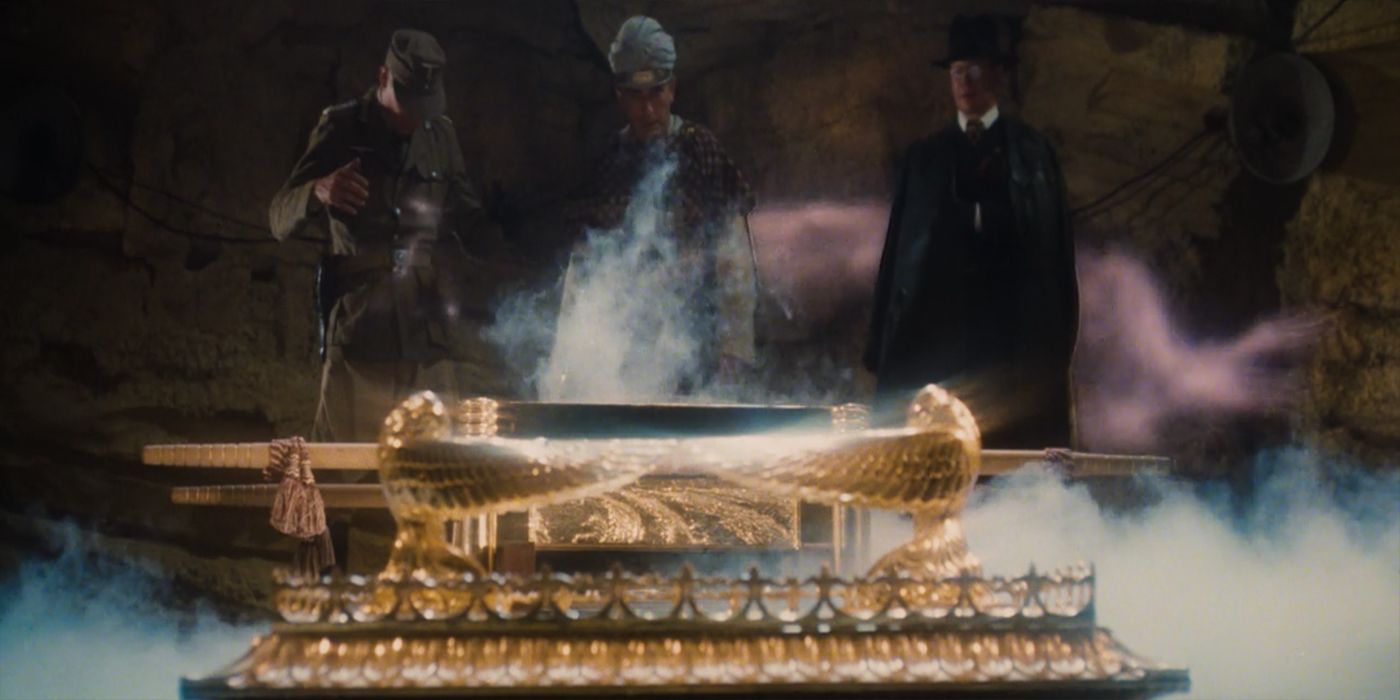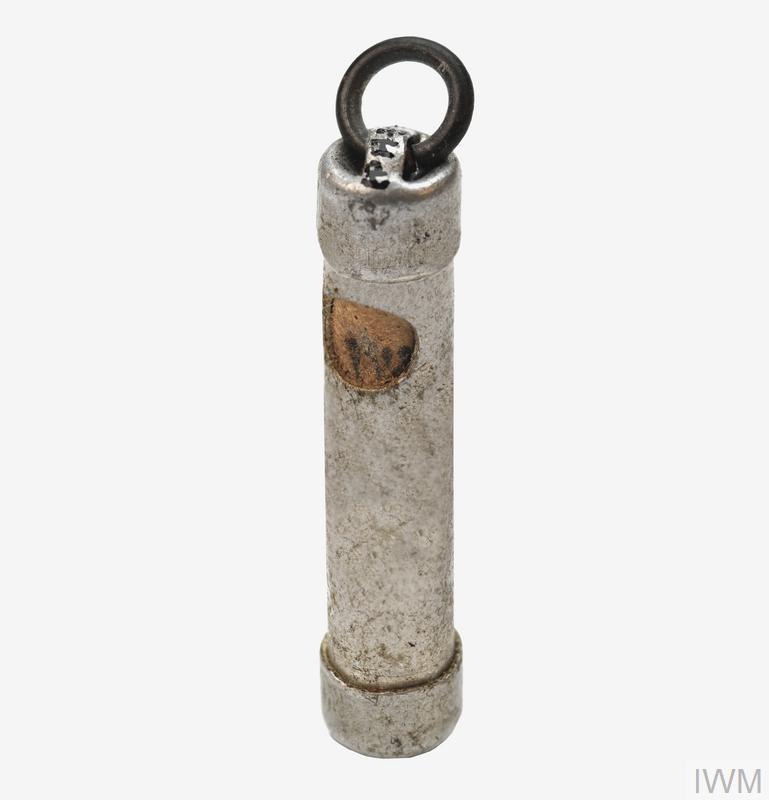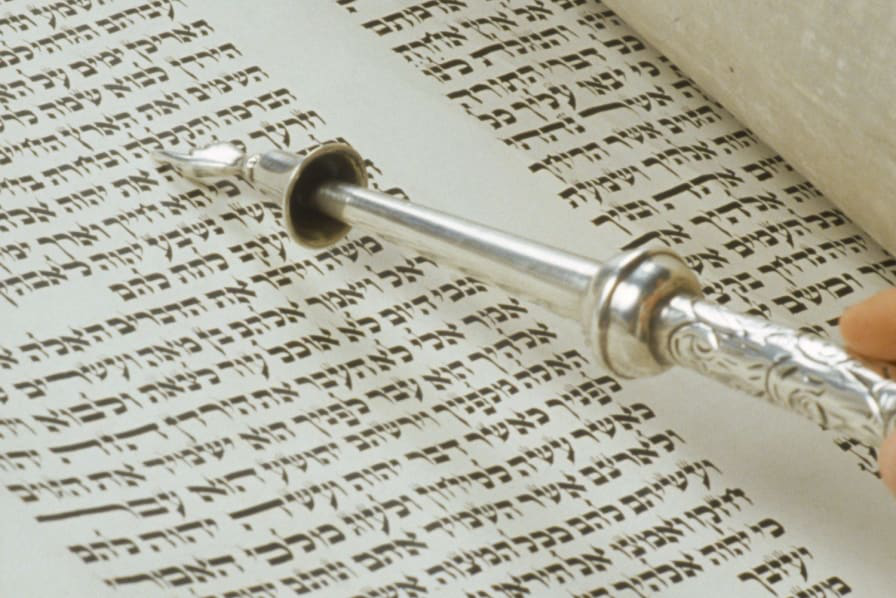(6) Moses dispatched them on the campaign, a thousand from each tribe, with Pinchas son of Eleazar serving as a priest on the campaign, equipped with the sacred utensils and the trumpets for sounding the blasts.
(2) וכלי הקדש AND THE VESSELS OF HOLINESS … [WERE WITH THEM] — these were the Ark and the Frontlet. Because Balaam was with them and through enchantment he made the kings of Midian float in the air and he himself floated with them, (Pinchas) showed them (held up to them) the Frontlet upon which the Divine Name was engraved and they immediately fell to the ground. On this account it is said (v. 8) of the Kings of Midian “upon those who had been slain”, meaning that they fell from the air upon those who had been slain; and similarly of Balaam it is written in the book of Joshua (13:22): “upon those who were slain by them”.
The War Against Midian: A Study for How the Priestly Torah Was Compiled by Dr. Ariel Kopilovitz
The key to understanding the reference to “sacred utensils” lies in a verse describing the Levites’ responsibilities:
Num 18:3 They shall discharge their duties to you and to the Tent as a whole, but they must not have any contact with the sacred utensils or with the altar, lest both they and you die.
This verse uses the term more expansively, implying that the “sacred utensils” are any utensil that was in the inside the Tabernacle, in contrast to the copper/bronze altar that stood in the Tabernacle’s courtyard.
Our verse therefore suggests that Phinehas took all of the Tabernacle’s inside utensils with him to battle. These utensils, coming from the Tabernacle’s inner precincts, represented the divine presence and thus divine assistance in the battle.

Advance, O יהוה !
May Your enemies be scattered,
And may Your foes flee before You!
(2) The Philistines arrayed themselves against Israel; and when the battle was fought, Israel was routed by the Philistines, who slew about four thousand men on the field of battle. (3) When the [Israelite] troops returned to the camp, the elders of Israel asked, “Why did the Eternal put us to rout today before the Philistines? Let us fetch the Ark of the Covenant of the Eternal from Shiloh; thus He will be present among us and will deliver us from the hands of our enemies.” (4) So the troops sent men to Shiloh; there Eli’s two sons, Hophni and Phinehas, were in charge of the Ark of the Covenant of God, and they brought down from there the Ark of the Covenant of the Eternal of Hosts Enthroned on the Cherubim. (5) When the Ark of the Covenant of the Eternal entered the camp, all Israel burst into a great shout, so that the earth resounded. (6) The Philistines heard the noise of the shouting and they wondered, “Why is there such a loud shouting in the camp of the Hebrews?” And when they learned that the Ark of the Eternal had come to the camp, (7) the Philistines were frightened; for they said, “God has come to the camp.” And they cried, “Woe to us! Nothing like this has ever happened before. (8) Woe to us! Who will save us from the power of this mighty God? He is the same God who struck the Egyptians with every kind of plague in the wilderness! (9) Brace yourselves and be men, O Philistines! Or you will become slaves to the Hebrews as they were slaves to you. Be men and fight!” (10) The Philistines fought; Israel was routed, and they all fled to their homes. The defeat was very great, thirty thousand foot soldiers of Israel fell there. (11) The Ark of God was captured, and Eli’s two sons, Hophni and Phinehas, were slain.
לְהוֹשִׁיעַ אֶתְכֶם. זֶה מַחֲנֶה הָאָרוֹן. וְיֵשׁ אוֹמְרִים זֶה הַשֵּׁם שֶׁהָיָה נָתוּן בָּאָרוֹן. דְּתַנֵּי. רִבִּי יוּדָה בֶן לָקִישׁ אוֹמֵר. שְׁנֵי אֲרוֹנוֹת הָיוּ מְהַלְּכִין עִם יִשְׂרָאֵל בַּמִּדְבָּר. אֶחָד שֶׁהָֽיְתָה הַתּוֹרָה נְתוּנָה בוֹ וְאֶחָד שֶׁהָיוּ שִׁבְרֵי הַלּוּחוֹת מוֹנָחִין בְּתוֹכוֹ. זֶה שֶׁהָֽיְתָה הַתּוֹרָה נְתוּנָה בְתוֹכוֹ הָיָה נָתוּן בְּאֹהֶל מוֹעֵד. הָדָא הִִיא דִכְתִיב וַאֲרוֹן בְּרִית י֙י וּמֹשֶׁה לֹא מָשׁוּ מִקֶּרֶב הַמַּחֲנֶה. וְזֶה שֶׁהָיוּ שִׁבְרֵי הַלּוּחוֹת נְתוּנִין בְּתוֹכוֹ הָיָה נִכְנַס וְיוֹצֵא עִמָּהֶן. וְרַבָּנִן אָֽמְרֵי. אֶחָד הָיָה. וּפַעַם אַחַת יָצָא וּבִימֵי עֵלִי נִשְׁבָּה...
“Rebbi Jehudah ben Laqish says, two arks were travelling with Israel in the desert; one in which the Torah was deposited and one in which the broken pieces of the tablets were deposited. The one in which the Torah was deposited was put into the Tent of Meeting; that is what is written: “Moses and the Ark of the Eternal’s covenant did not move from the camp.” The one in which the broken pieces of the tablets were deposited was going out and coming in with them. But the Rabbis say, it was only one, and once it went out in the days of Eli and was taken prisoner...
The Two Arks: Military and Ritual by Dr. Rabbi Tzemah Yoreh
This text is envisioning the carrying of the Ark as a standard part of the Levites’ work, even once they enter the land, since this is meant to explain why they weren’t given land of their own. Carrying the Ark is not an incidental necessity during the wilderness wandering, but an essential function of the Levites, since the Ark may accompany Israelite armies into battle.
In contrast, the Priestly source is working with the stationary Ark, whose function is a place for God’s glory to dwell among the Israelites. The Priestly sources focus on the Ark’s aesthetic qualities, and the danger associated with it. The accompanying cloud remains above the Ark at all times to warn people off...
When a covenant / berit is enacted, there is almost always an active element involved in concretizing it. Covenants in the Bible involve sacrificing animals, circumcision, walking between rocks, spraying of blood, etc. The most common verb associated with berit is כ.ר.ת, which means “to cut.” This active element is ever present in biblical covenants. You have to do something very concrete in order to enter into the covenant. This active image fits well with the depiction of the Ark as a sign of God’s active presence in the camp, assisting Israel in war.
In contrast, the Priestly source does not vary its terminology, but consistently calls the Ark אֲרֹן הָעֵדֻת (Aron HaʿEdut), Ark of the Testimony. Like berit, the term ʿedut is a reference to the object contained inside the Ark (Exod 25:16, 21). Deriving from the Hebrew word עד (ʿed), meaning “witness,” the Testimony in the Ark is a reminder of YHWH’s laws and presence.
Testimony has different connotations than covenant, implying stationary passivity. In Genesis 31:45–52, a stationary rock or pile of rocks serves as a “witness” (עד) for the covenant between Jacob and Laban. Similarly, in his final speech, Joshua sets up a stone to function as a “witness” or “testimony” (עדה) to Israel’s commitment to worship YHWH exclusively. This is the primary way the priests saw the Ark, as the holiest piece of furniture, a reminder of YHWH’s presence in their midst...
The Priestly Ark is part of an attempt by the Priestly authors to tame problematic ritual objects by incorporating them safely into the Priestly world of the Temple. In this way, they consolidate their power over the holy. We see something similar with their treatment of cultic objects such as the Ephod and the Urim ve-Tummim, which in non-Priestly sources are divinatory objects, and in the Priestly source are part of the High Priest’s outfit.
In this case, they turned the Ark of YHWH’s Covenant, a powerful magical weapon used by the Israelites in battle, into the Ark of the Testimony, a piece of furniture, hidden away in the sacred precinct of the Tabernacle. While they go into great detail about the beauty of the Ark and its golden cover, which contrasts sharply with Deuteronomy’s simple wooden box, at the same time, they remove this dangerous object from the hands of the people. The only access any human being has to the object in the Priestly text is through the medium of YHWH’s disembodied voice calling out from between the cherubim.
§ Rabbi Yehuda raised a contradiction. It is written: “The ends of the staves were seen,” and it is written: “But they could not be seen without” (I Kings 8:8). How? They were seen and yet not seen. This was also taught: “The ends of the staves were seen”; one might have thought that they did not move from their position and did not protrude at all. Therefore, the verse states: “And the staves were so long.” One might have thought that they ripped through the curtain and emerged on the other side; therefore, the verse states: “They could not be seen without.” How? They pushed and protruded and stuck out against the curtain, and appeared like the two breasts of a woman. As it is stated: “My beloved is to me like a bundle of myrrh, that lies between my breasts” (Song of Songs 1:13).
The Elusive Ark: Locus of Longing in Exile by Rachel Adelman
14] “Whenever the ark set out, Moses would say, ‘Arise, O Lord (YHWH), let your enemies be scattered, and your foes flee before you.’ And whenever it came to rest, he would say, ‘Return, O Lord (YHWH) of the ten thousand thousands of Israel’” (Num 10:35–36, NRSV). This couplet, framed by inverted nuns, is known as the Song of the Ark and is most likely drawn from an independent (non-documentary) source (cf. Pss 68:1 [68:2 MT] and 132:8). Jacob Milgrom, The JPS Commentary: Numbers (Philadelphia: JPS 1990), 77. This description of the ark’s deployment contradicts the P source (cf. Num 2:17 and 10:21), in which the Levites carry the mishkan in the midst of the other tribes, who are arrayed around it in marching formation. The Song of the Ark is recited in the synagogue upon taking the Torah scroll out of the ark. Ironically, the militaristic imagery is lost in the con- gregational setting—or perhaps it is sublimated...
The ark, shapely under the veil, reveals yet conceals: the staves compared to breasts, the hidden ark during the First Temple period compared to a bride, and the interlocking cherubim compared to the “consummation devoutly to be wished.” The wings of the cherubim frame an empty space above the cover of the ark—a tokh, a vacuum at the sacred center that is filled in when the desire between God and Israel is consummated.
The Talmud thus transforms the biblical image of the ark, where the divine is manifest as a masculine, externalized force, a Man-of-War in a militaristic context, into a feminine one in the Temple, an emblem of covert intimacy and concealment. When “at home” (bi-meqomo), fully domesticated and beloved, the divine presence becomes an object of desire rather than a power of subjugation.




